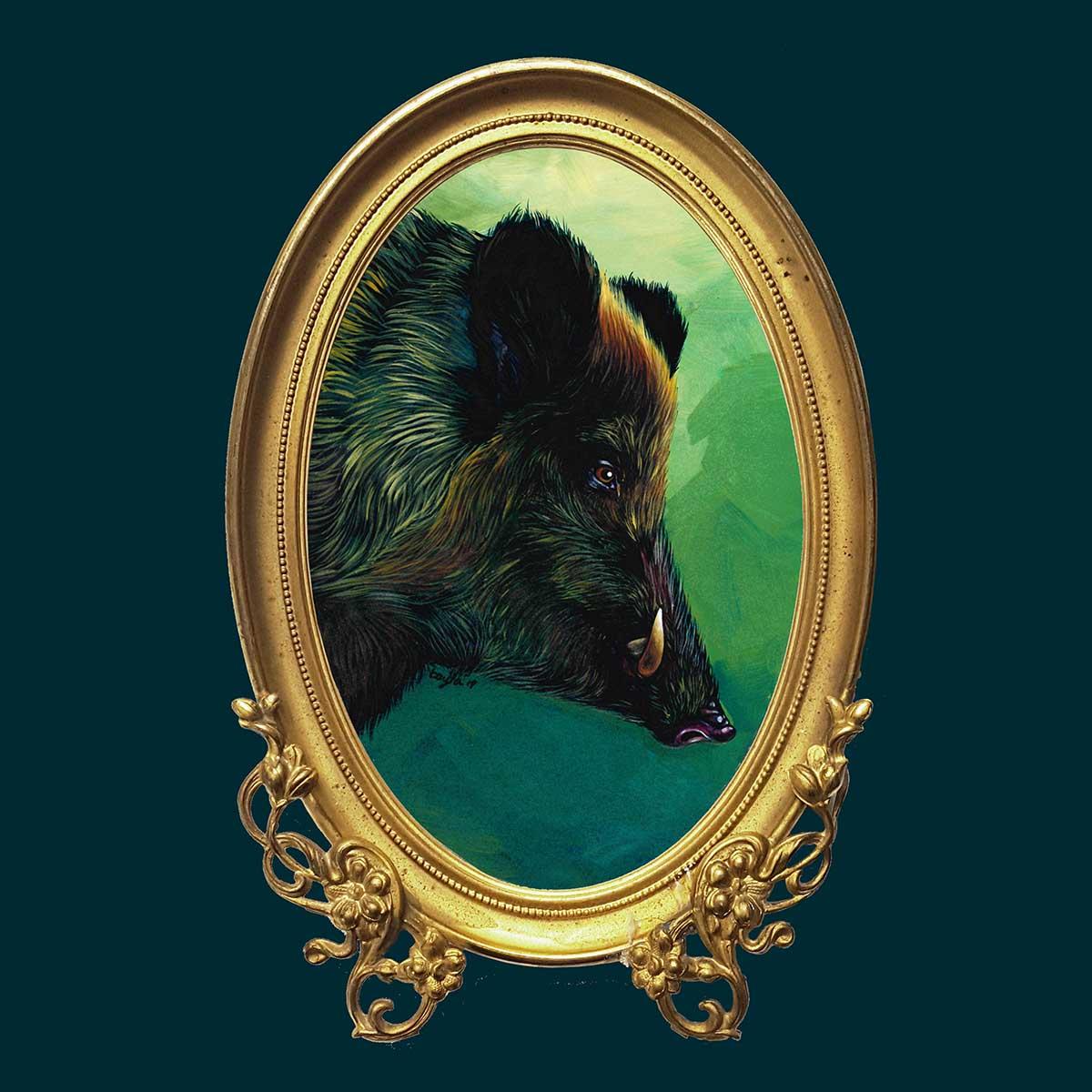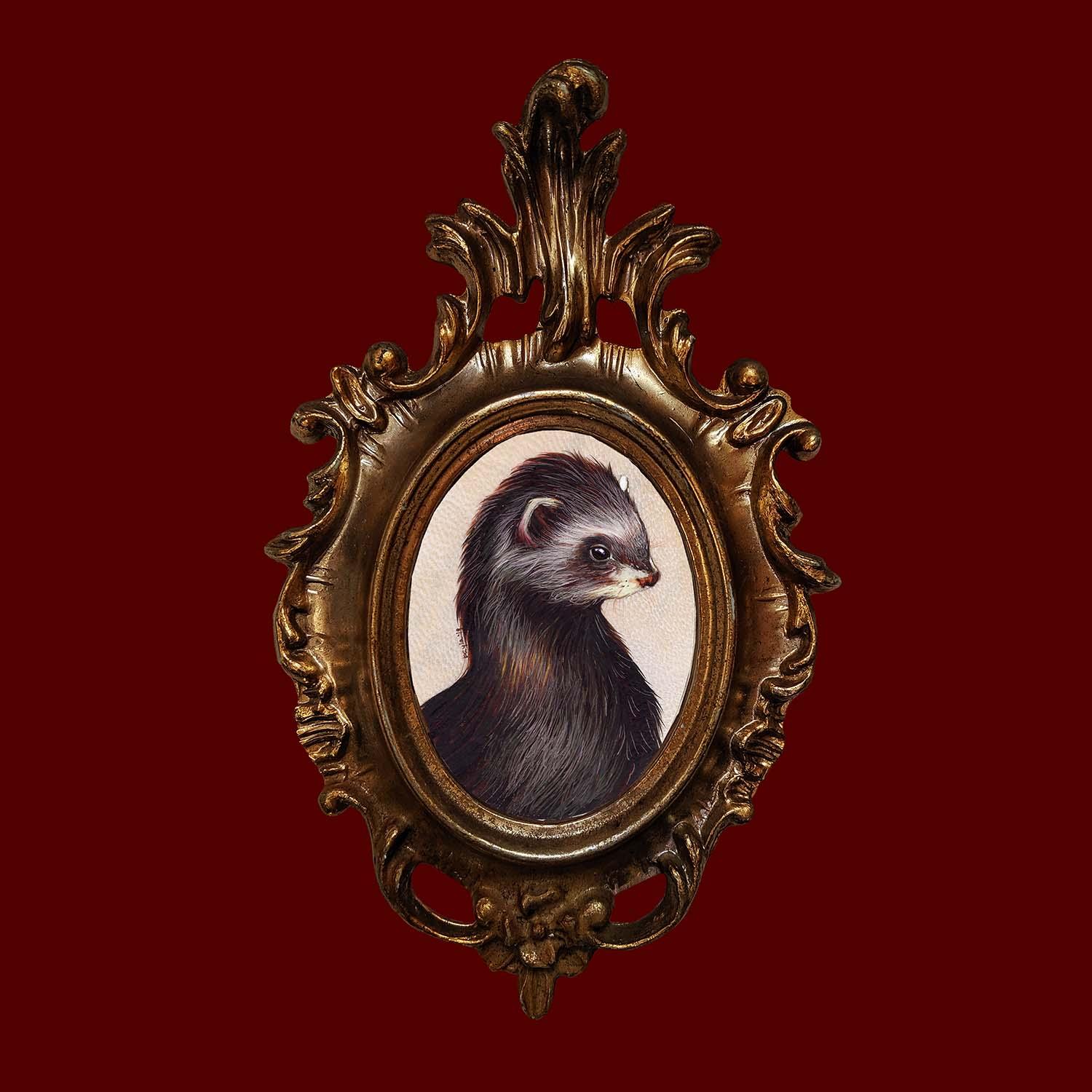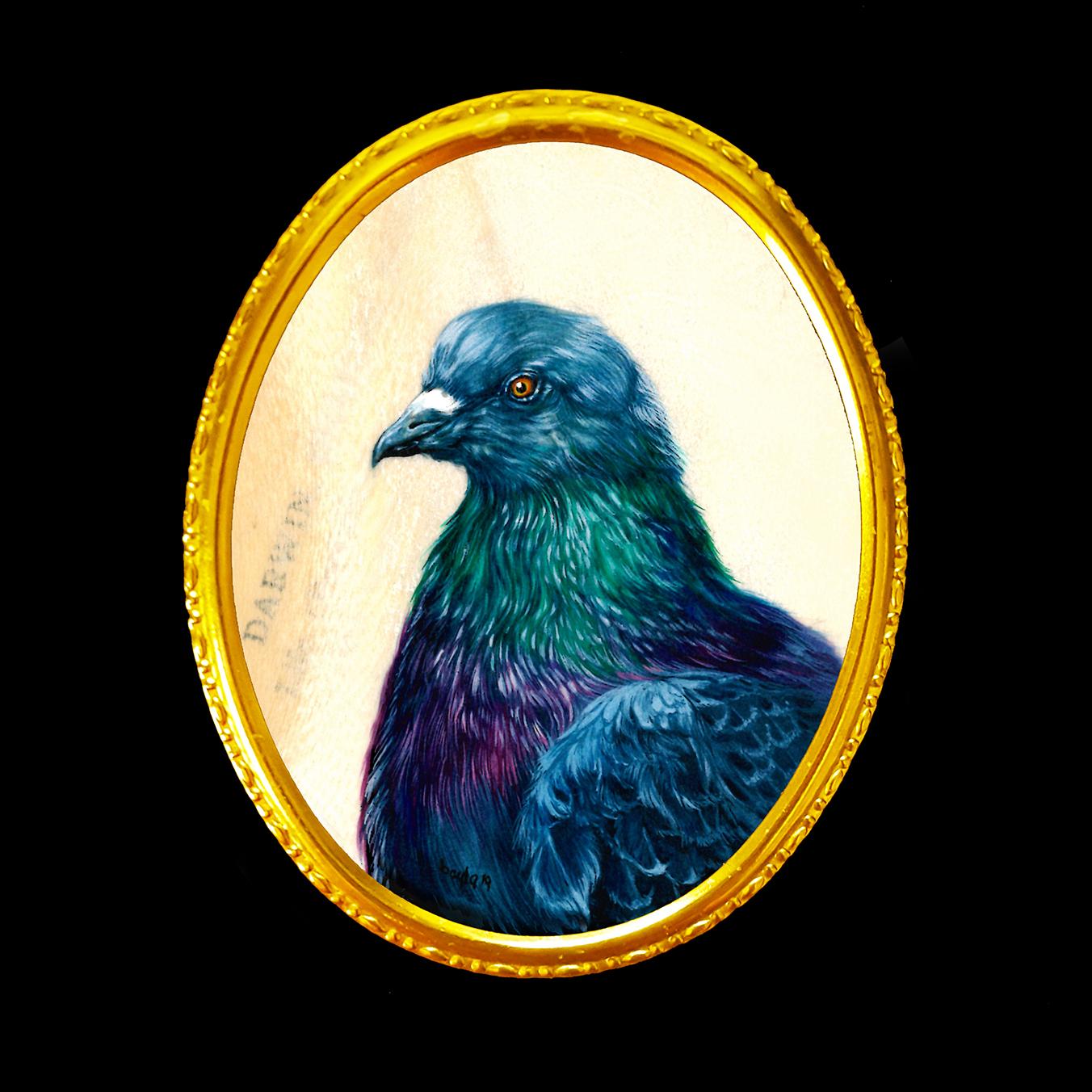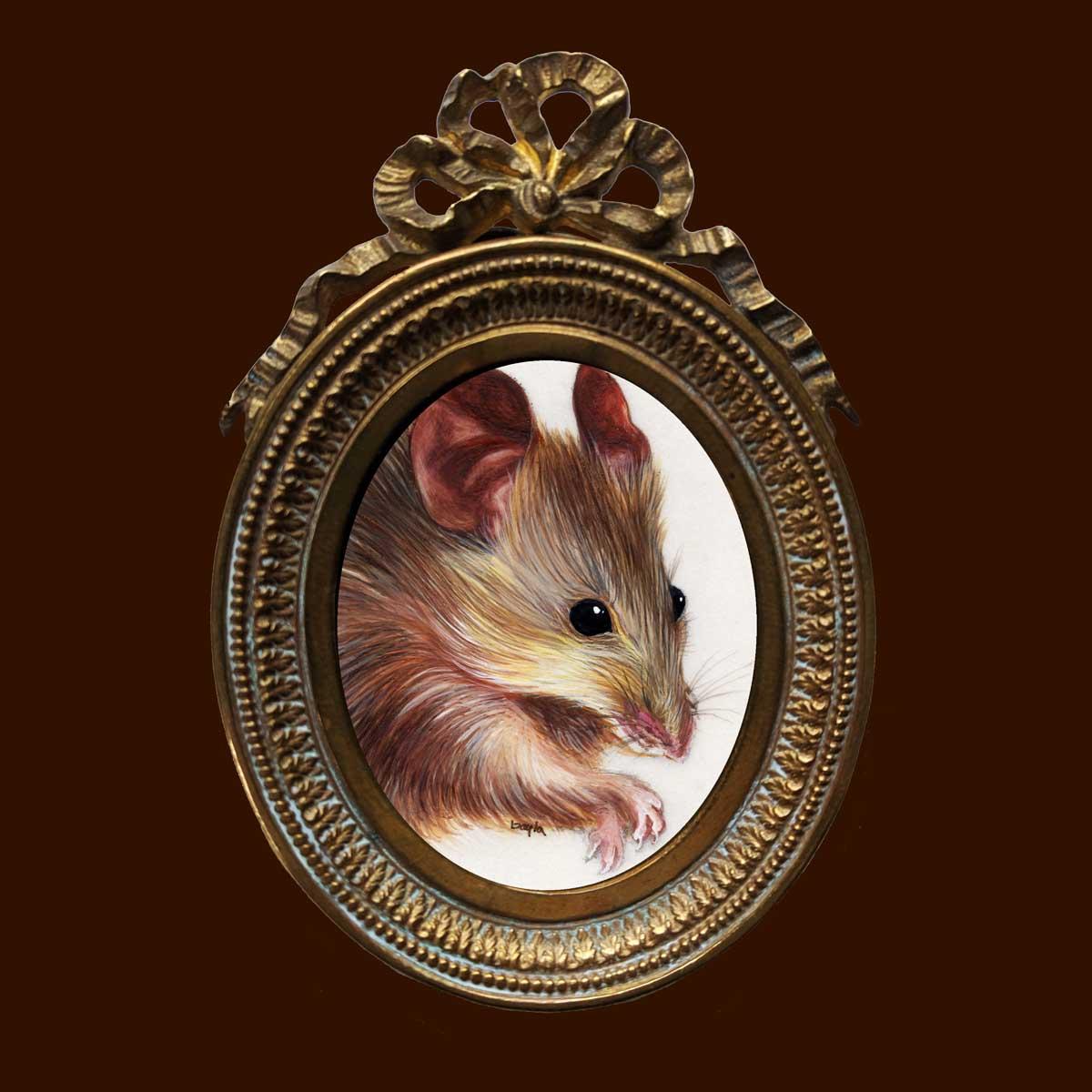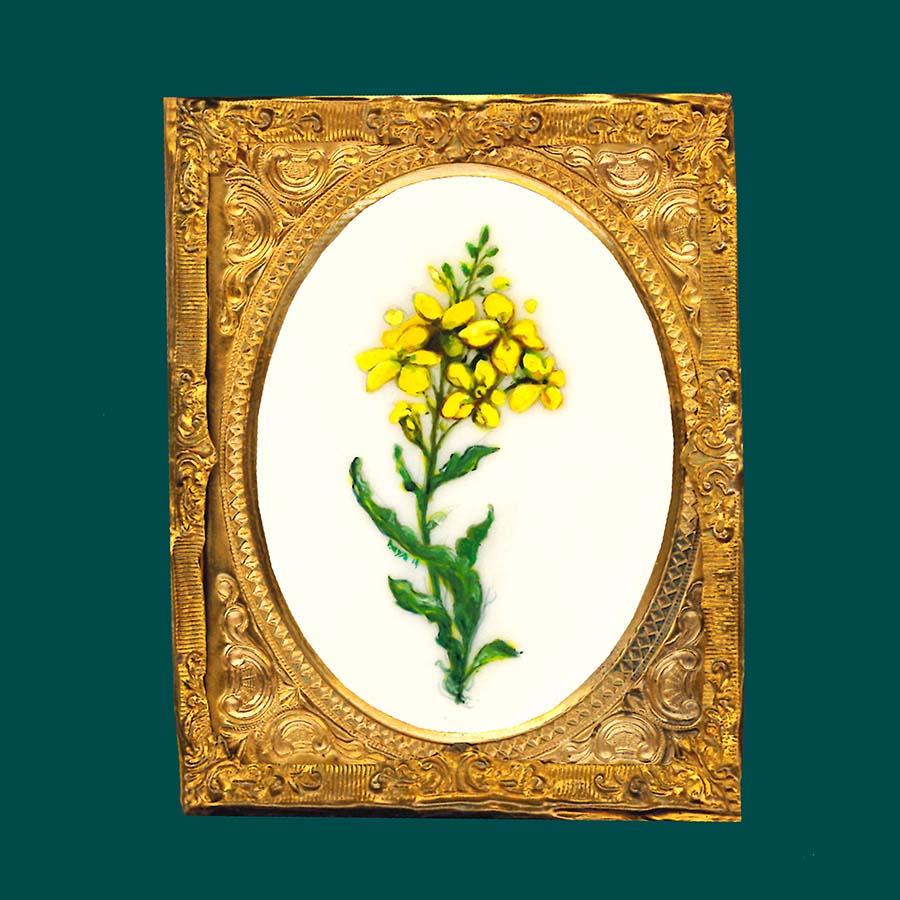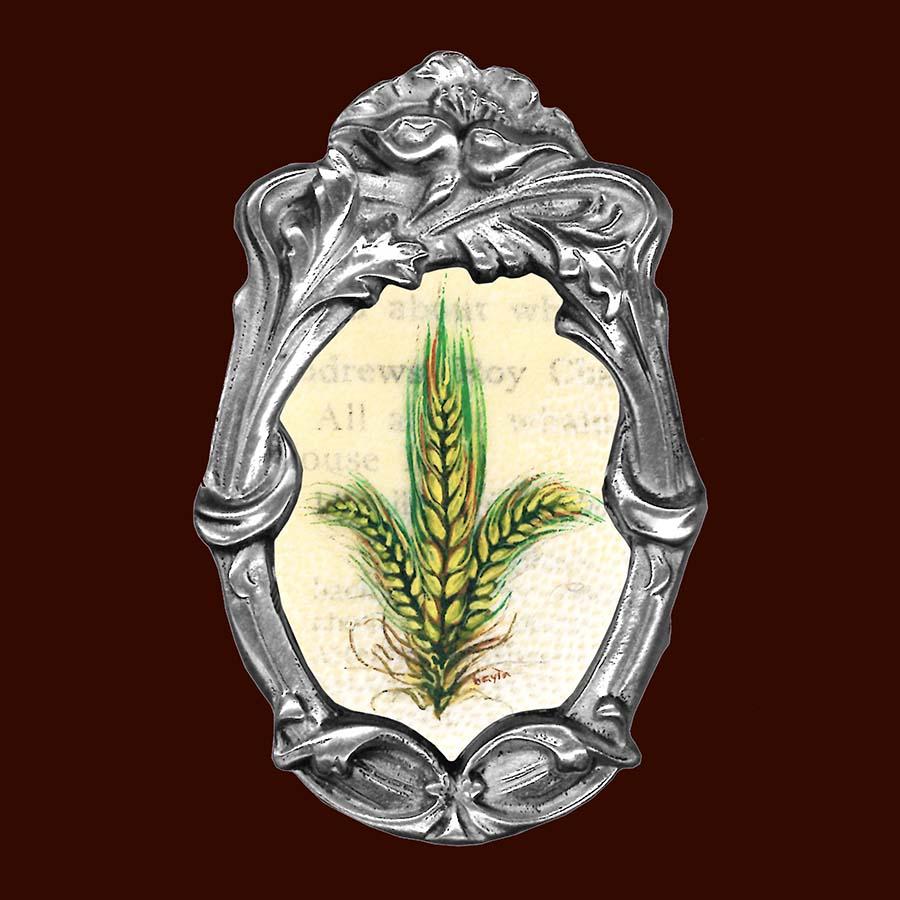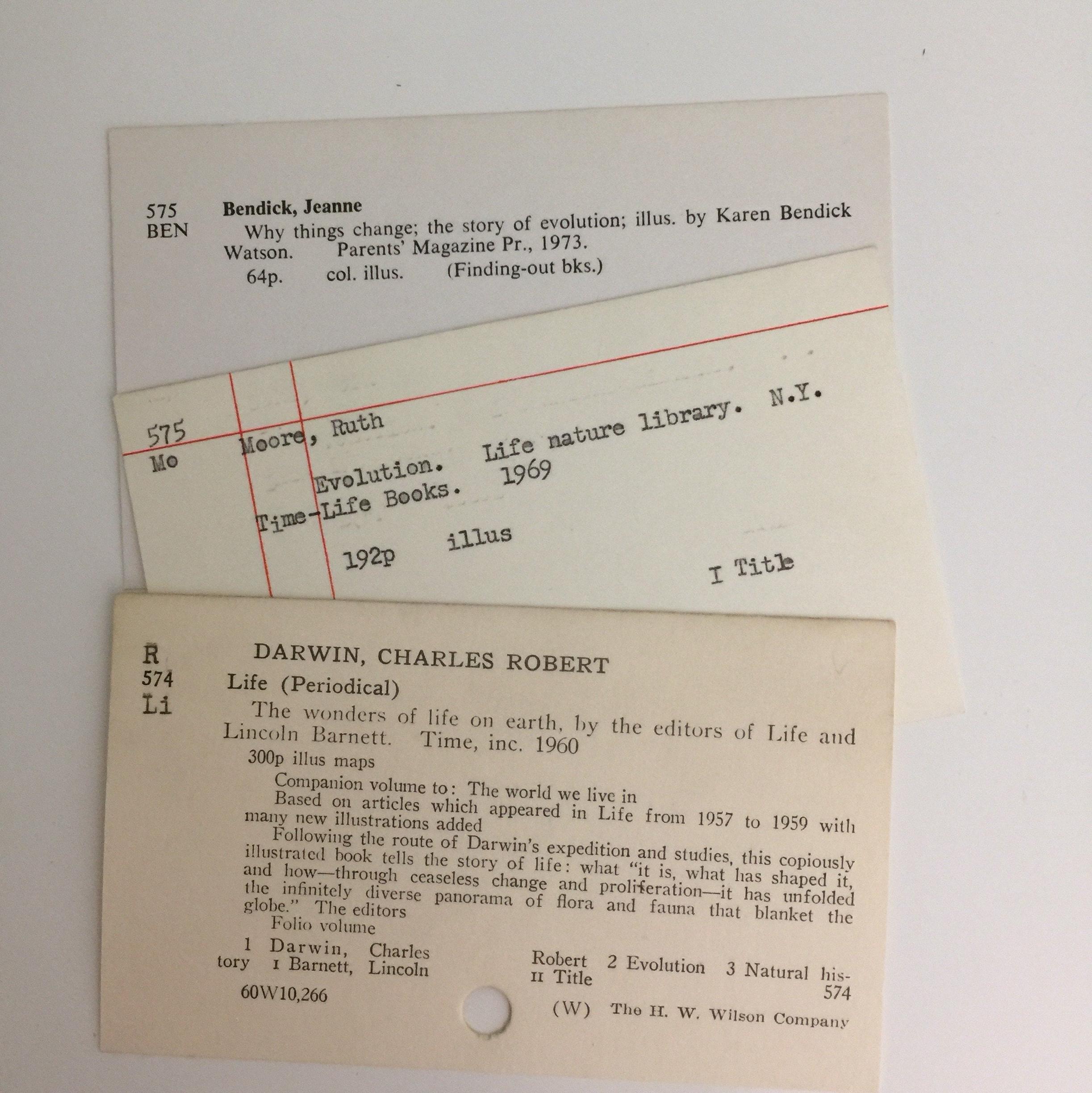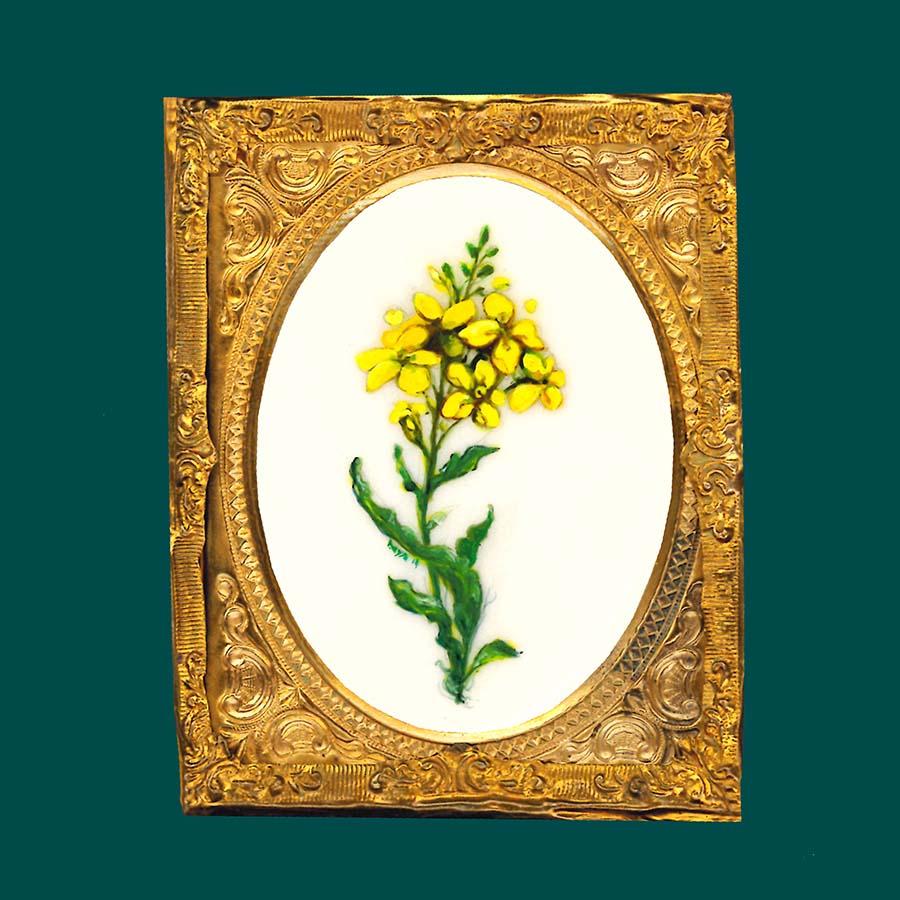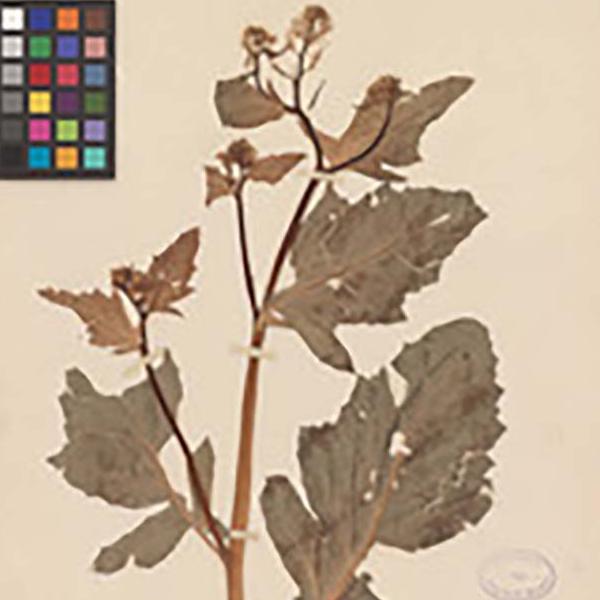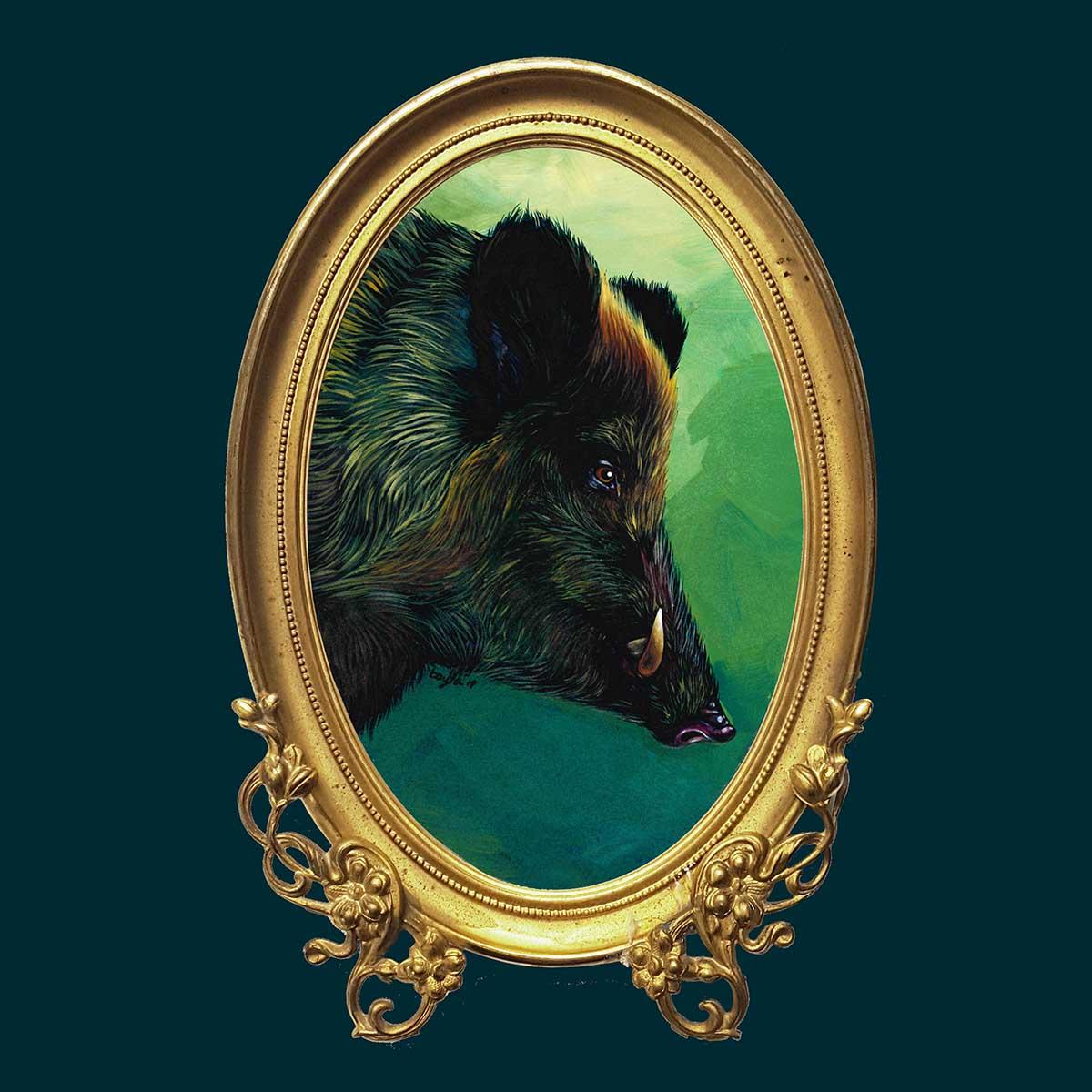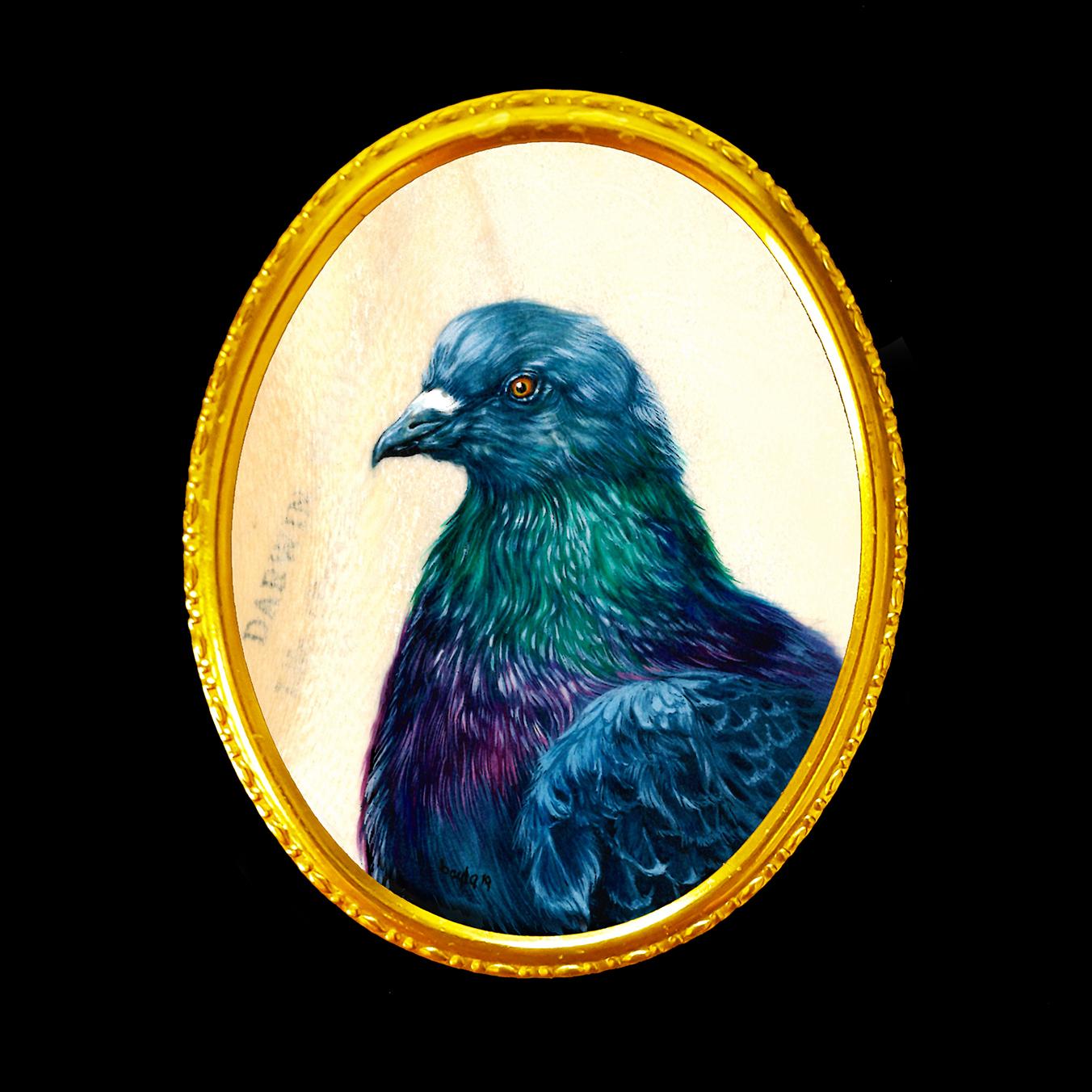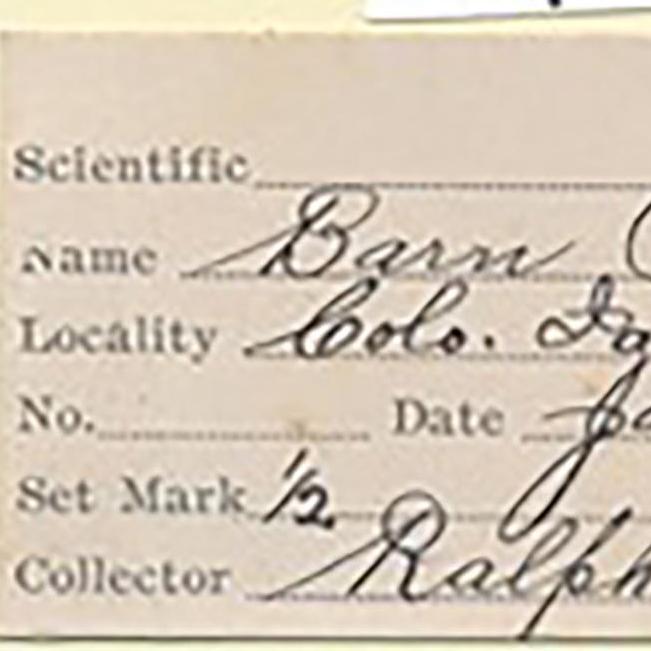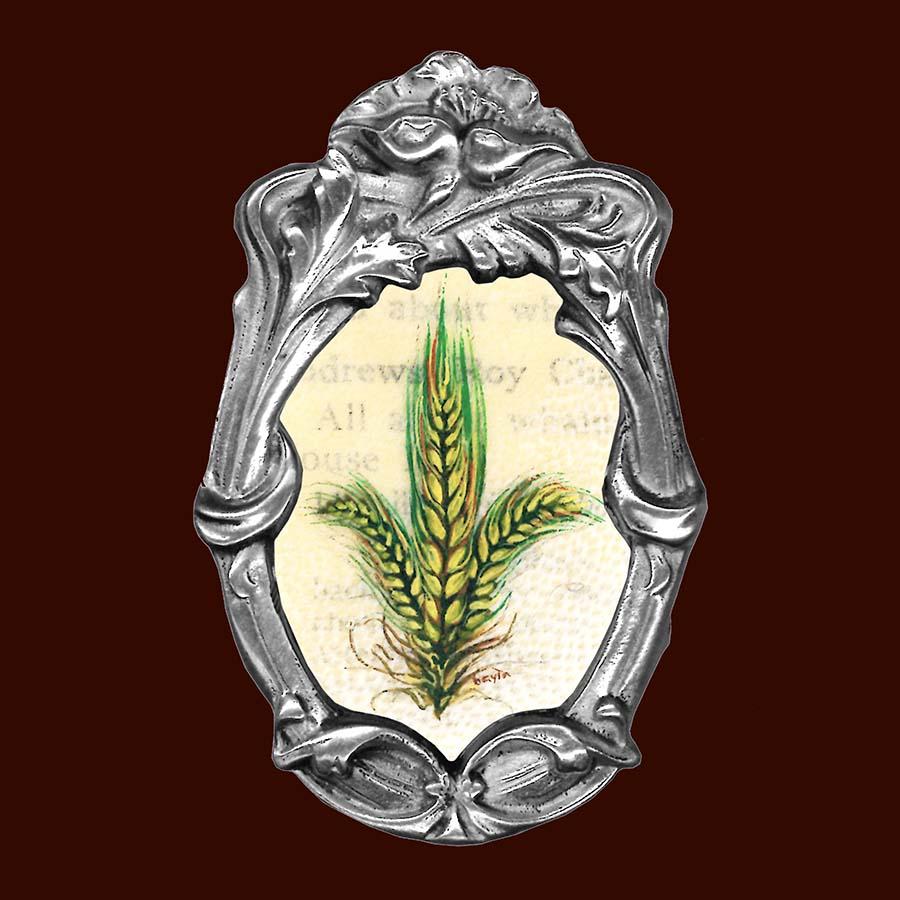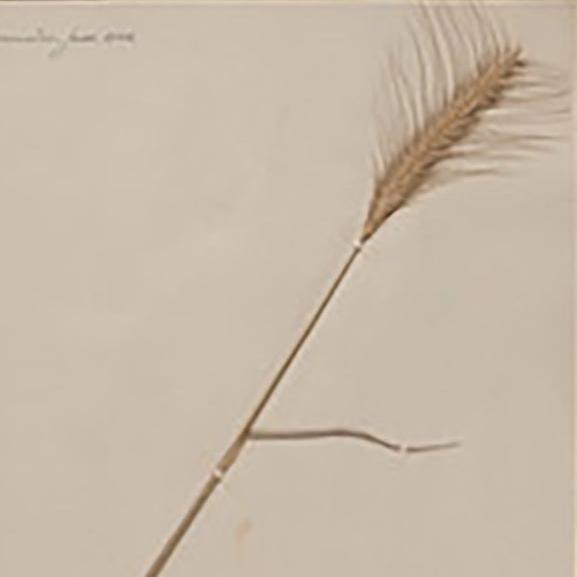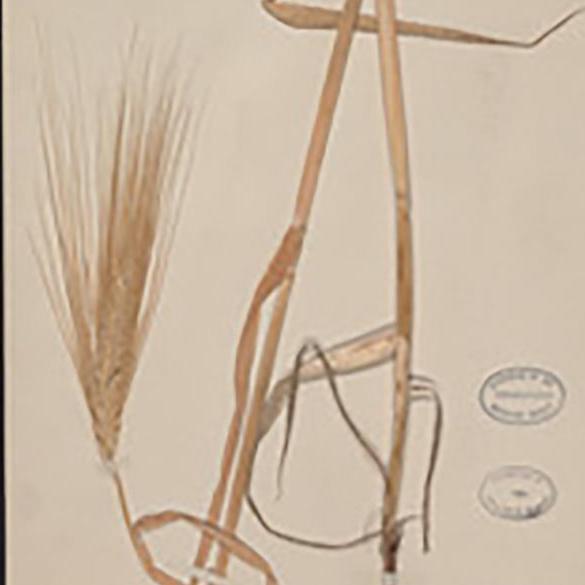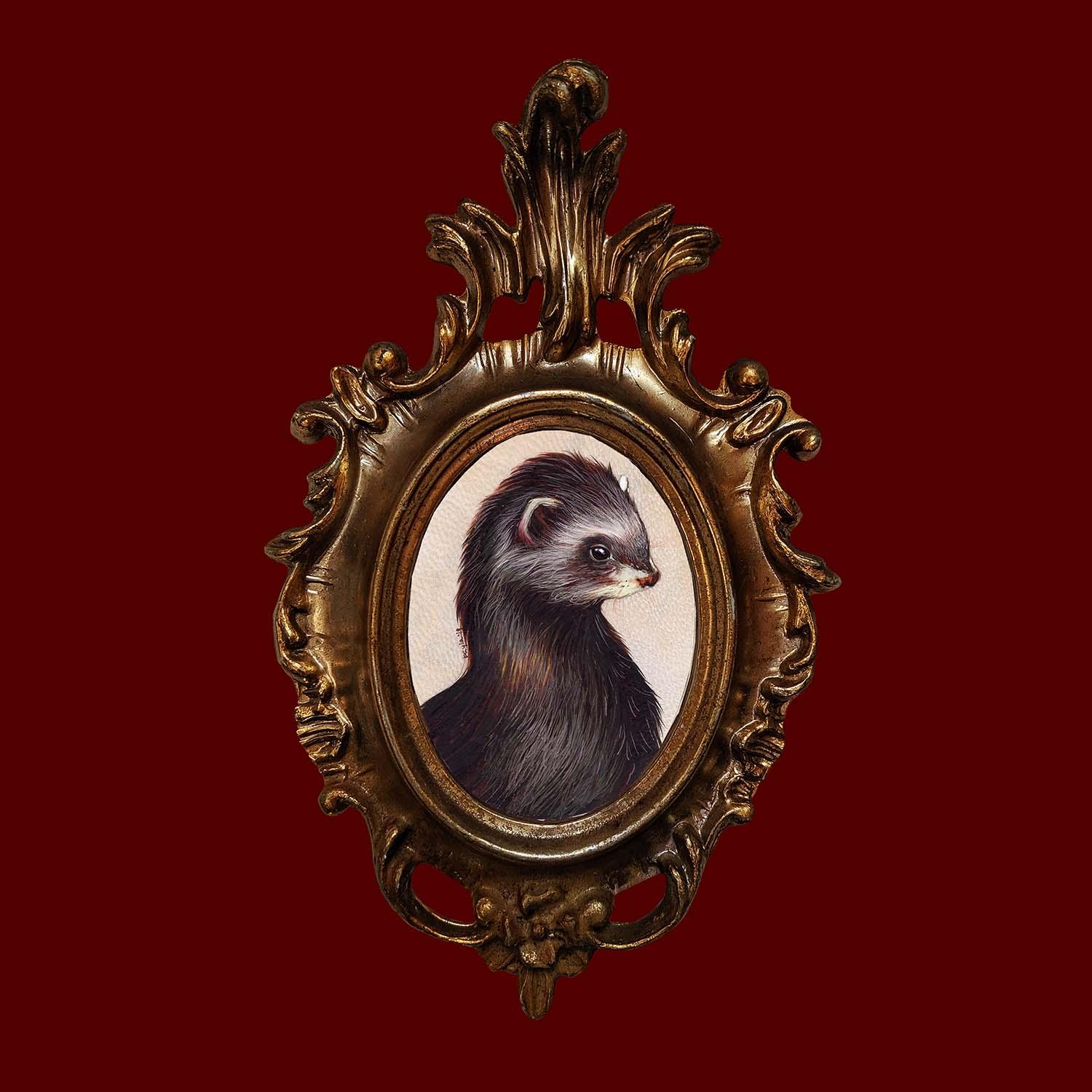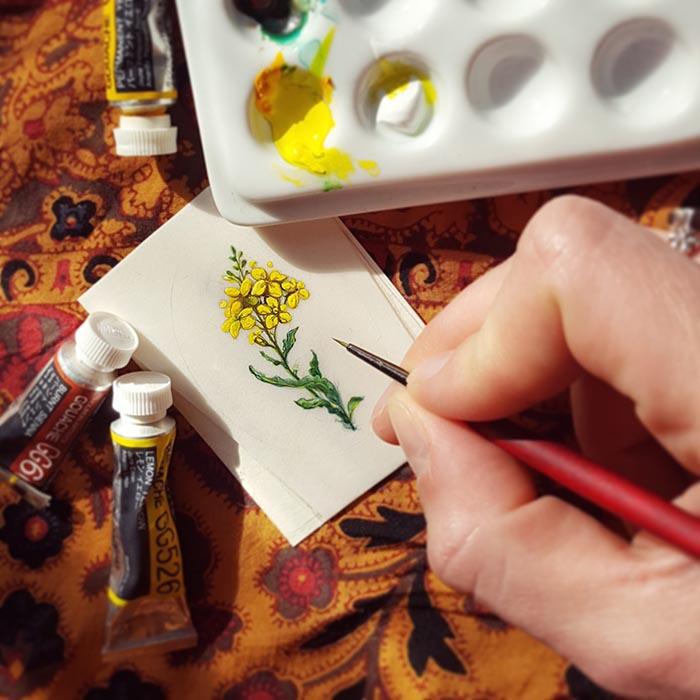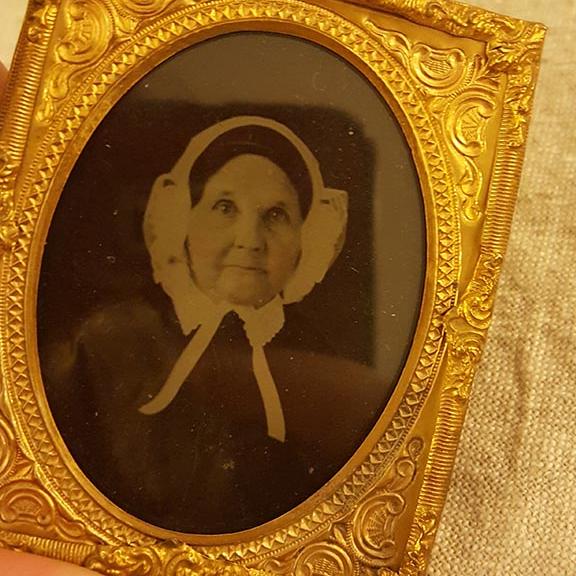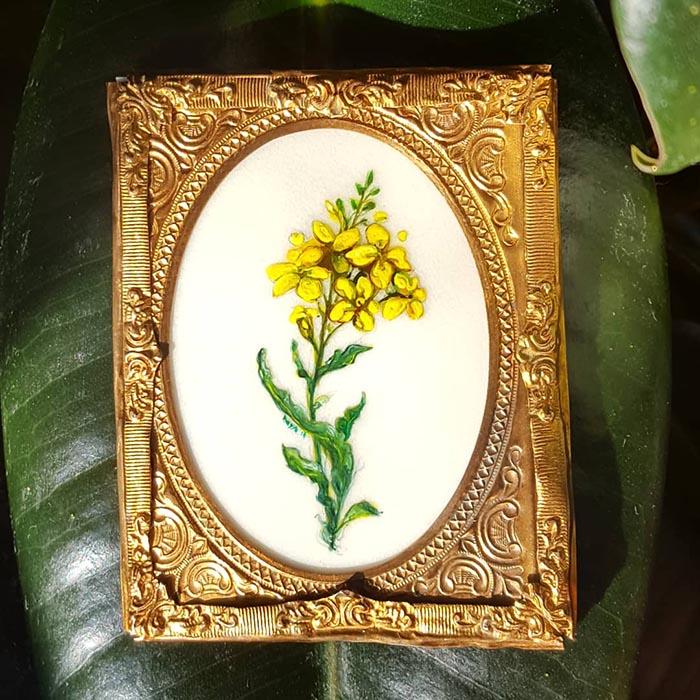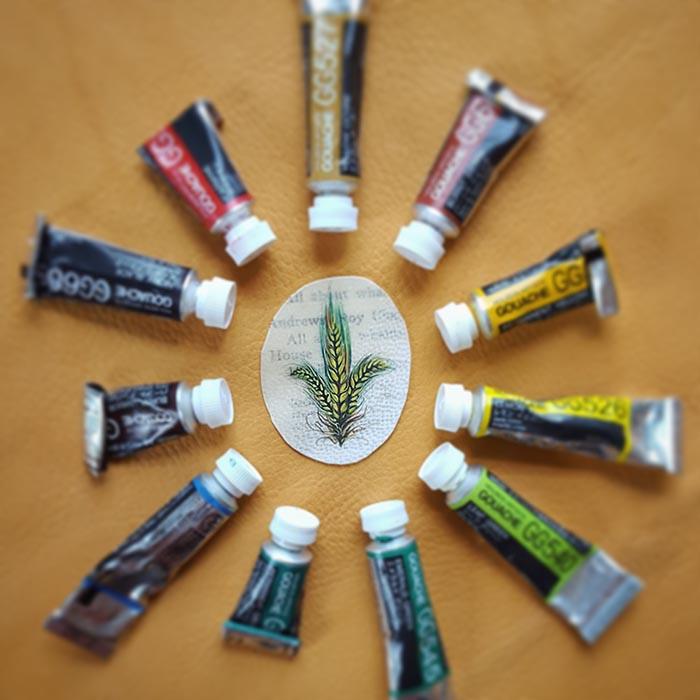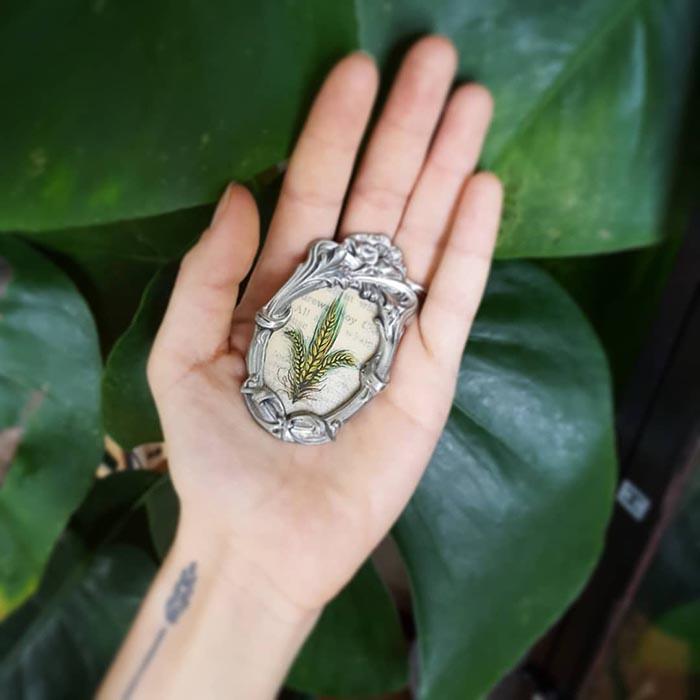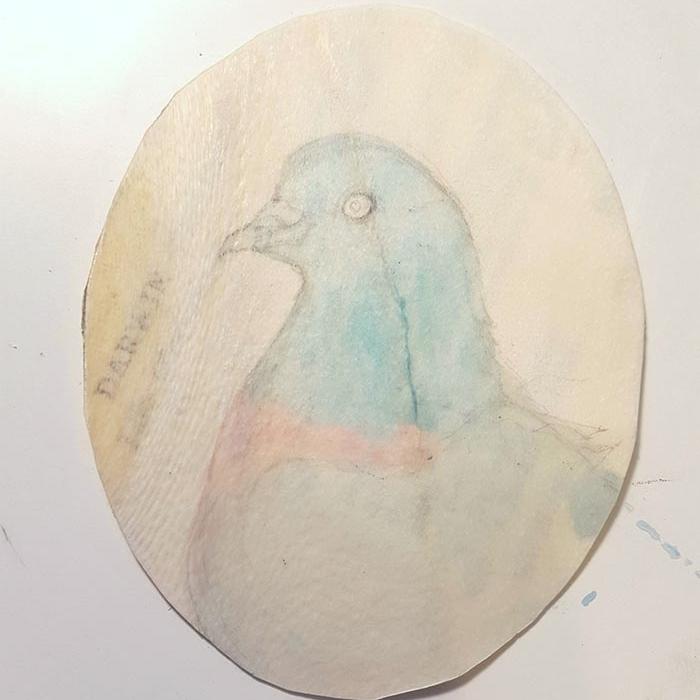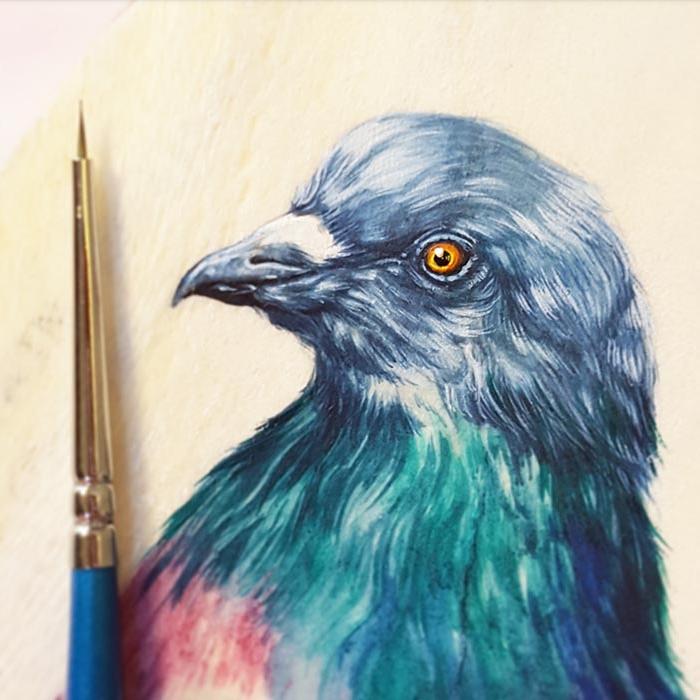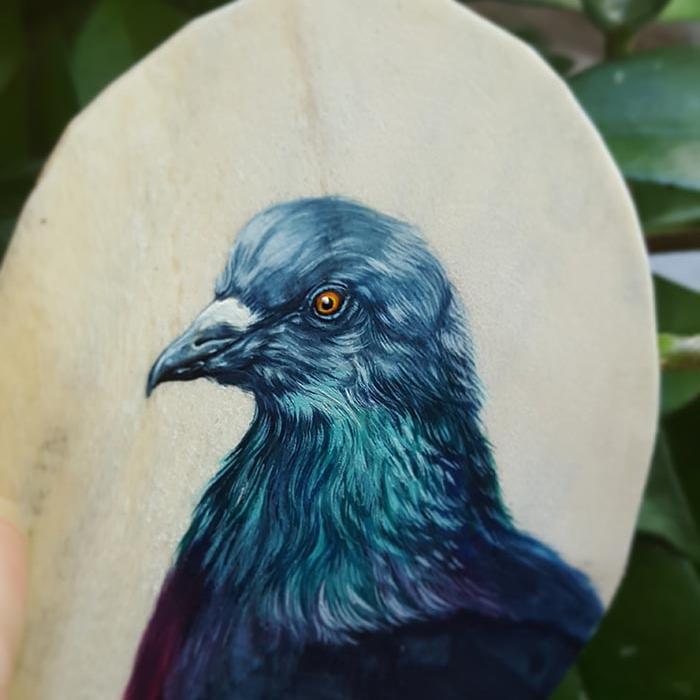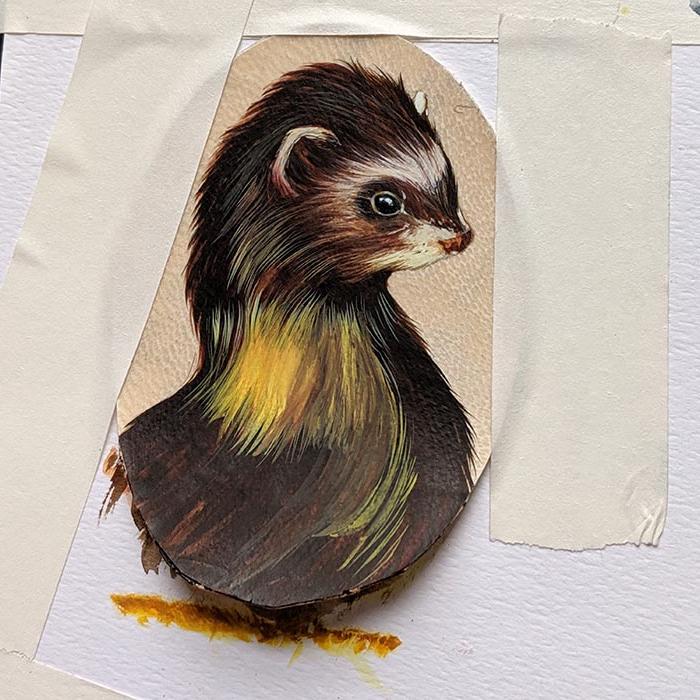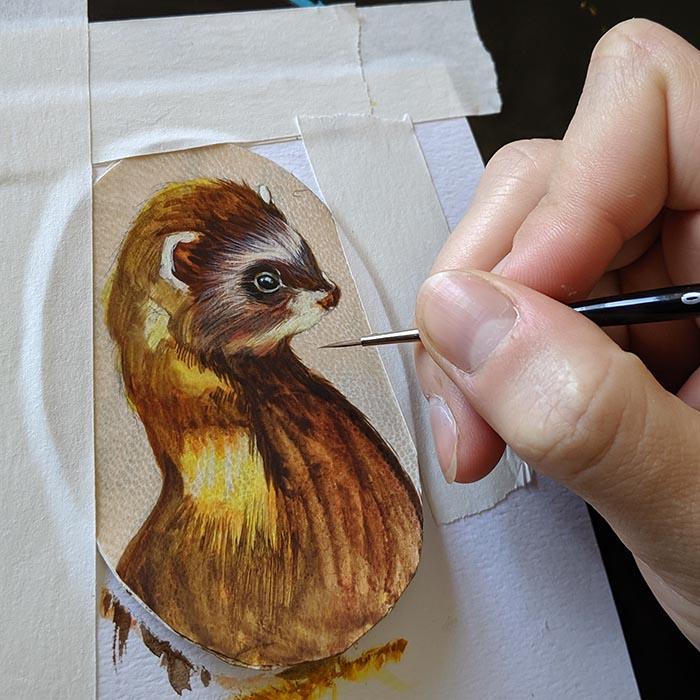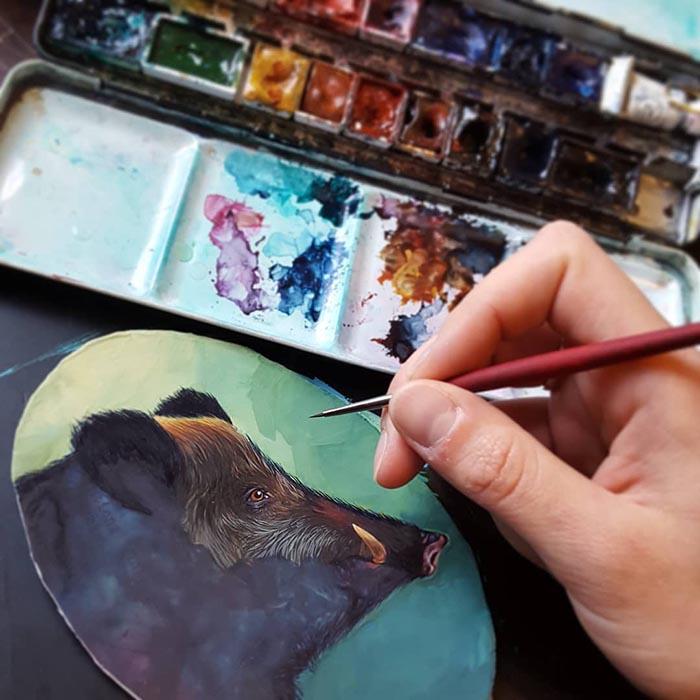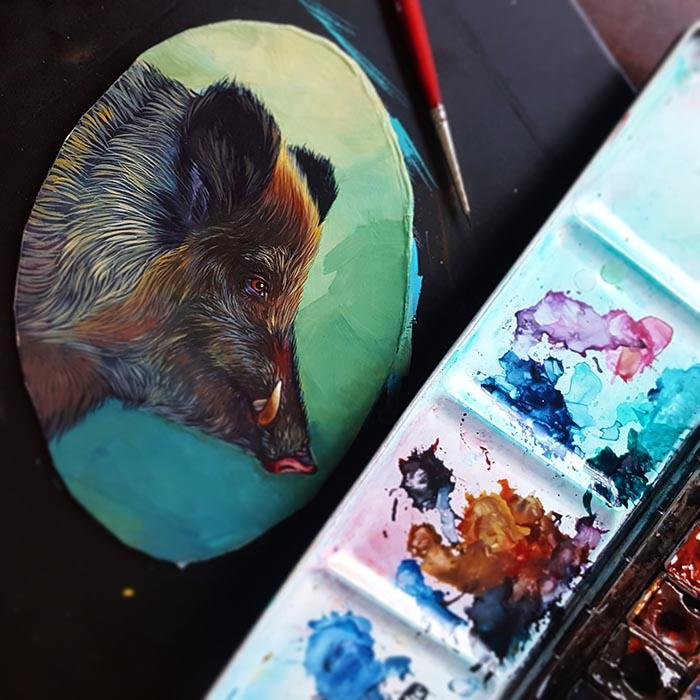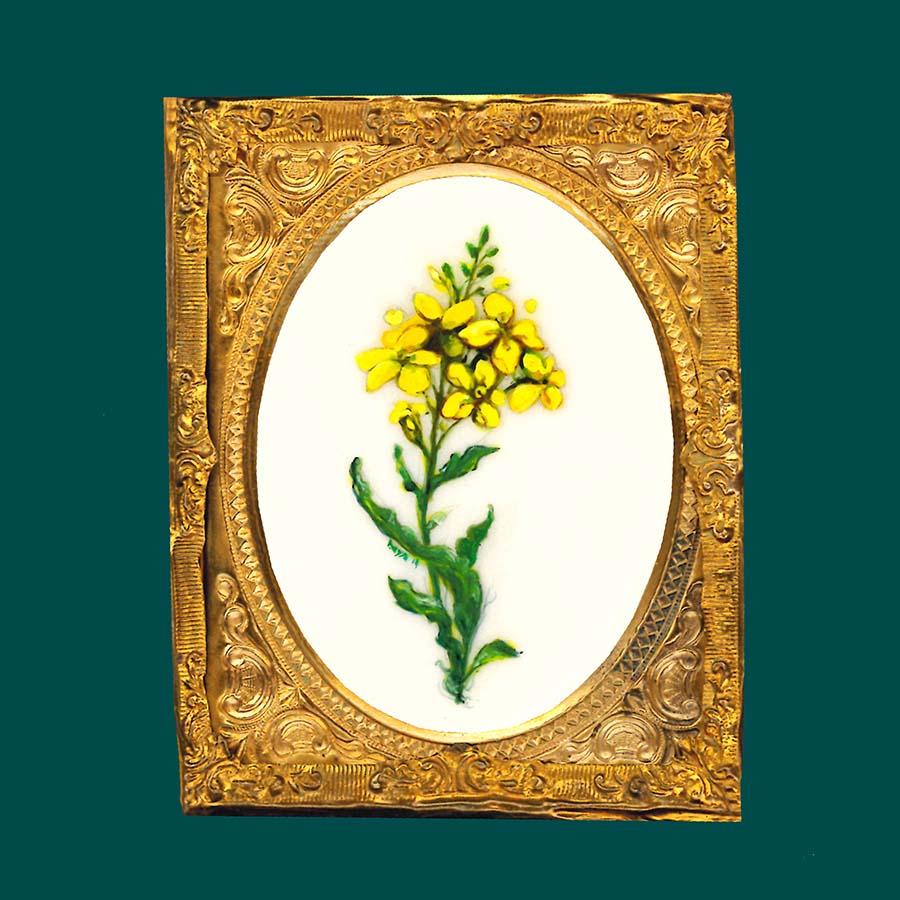Last Common Ancestor
Bayla Arietta
Watercolor and gouache on vellum
Mounted on vintage library catalog cards
Various sizes
2019 - 2020
©Bayla Arietta
Last Common Ancestor
Traditional early Renaissance miniatures developed from medieval manuscript illumination, and depicted intricate portraits of family and loved ones. These objects were gifted and exchanged, sometimes intended only for the recipient, and were housed in ornate frames or lockets.
The series Last Common Ancestor displays the most recent wild ancestors of domesticated plants and animals on various museum and library ephemera. Vintage cataloging index cards from books related to biology, evolution, and animal domestication are used as a backing for genuine calfskin vellum, as an alternative to the symbolically selected playing cards (kings and queens) originally used in miniature portrait painting during the 16th century. The vellum is polished using a fine pumice powder to remove dirt and oil, and the portraits are executed using tiny brushes, watercolor, and gouache. The size of these precious objects is not what traditionally categorized them as miniatures. Rather, it was the technique that was considered the defining factor. With a modern twist to an old art form, Last Common Ancestor illustrates the origin of domesticated species in a tender and nostalgic way, as though the tame species is fondly looking back or admiring a member in the phylogeny of its family tree.
This portrait miniature in the collections of the Yale Center for British Art depicts Anne of Denmark from the studio of Nicholas Hilliard, ca.1547–1619. This is an example of gouache on vellum laid onto a playing card.
The Yale Center for British Art has almost 500 beautiful examples of portrait miniatures, and just about all of them are available online in its searchable collections database.
Inspired by treasures such as this, I began my ongoing series Last Common Ancestor.
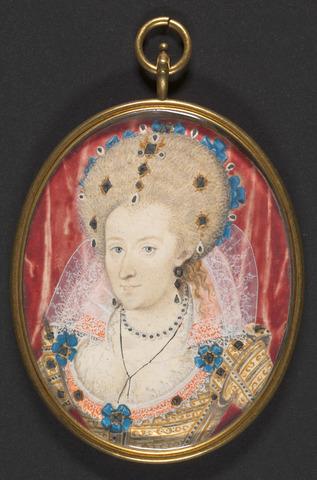
I began by collecting small ornate frames, scouring eBay, Etsy, thrift stores, and antique shops.
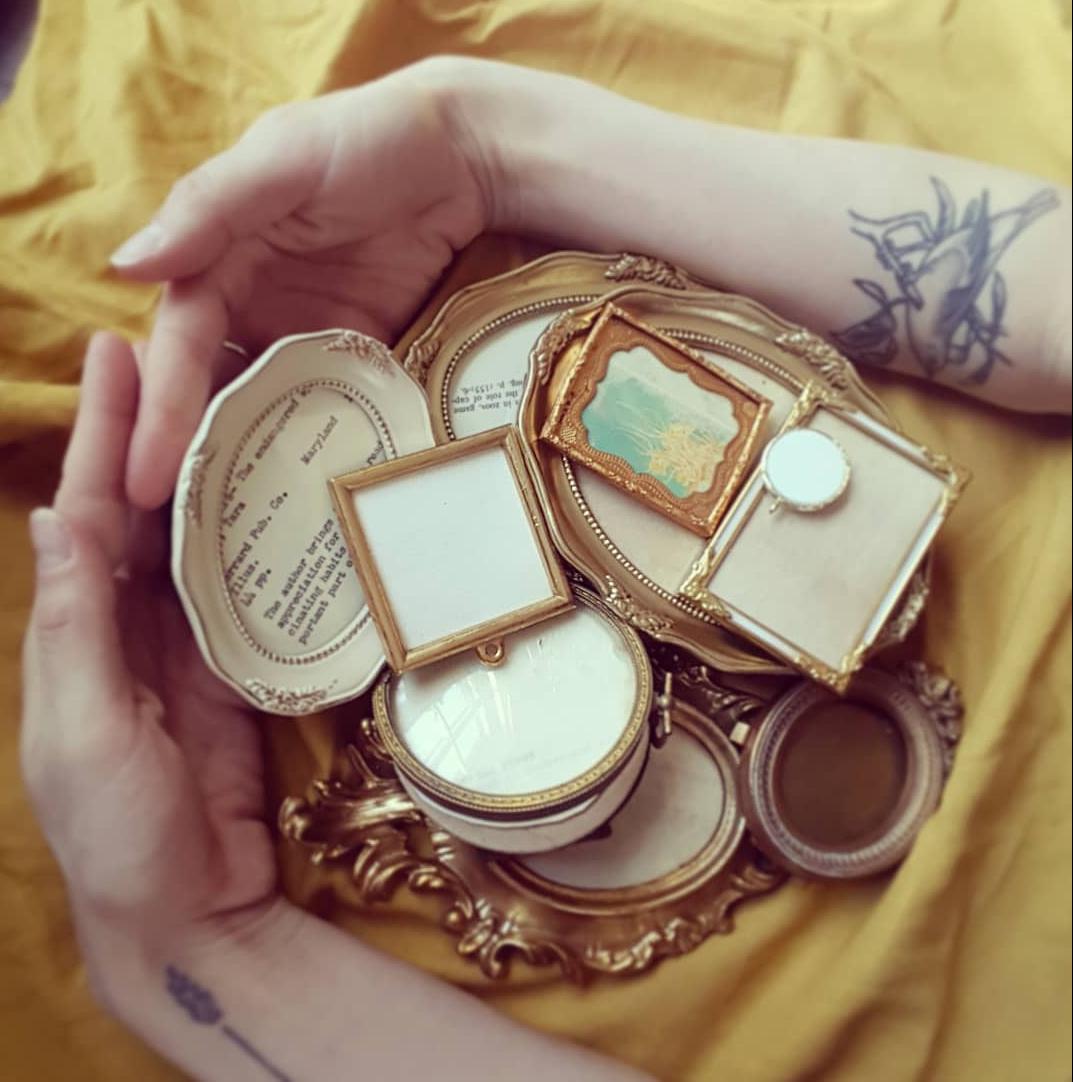
Some of the frames I acquired housed beautiful antique photographs. I learned all about daguerreotypes, ambrotypes, and early forms of photography.
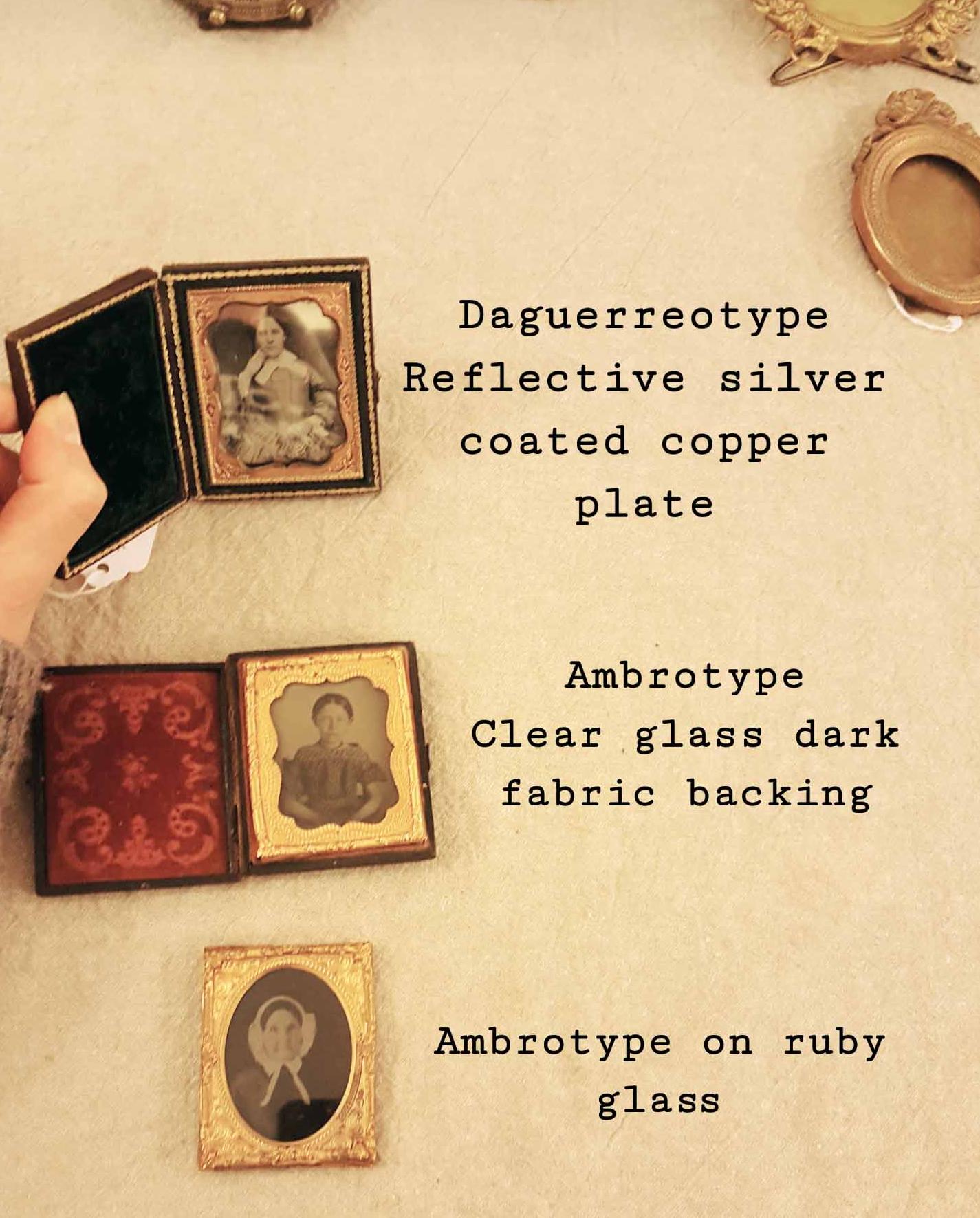
Using traditional methods, I glued the genuine calfskin vellum to the card backing and then polished the vellum with a fine pumice powder.
I did a lot of tests and practice pieces, playing with technique, but also experimenting with fixatives and varnishes.
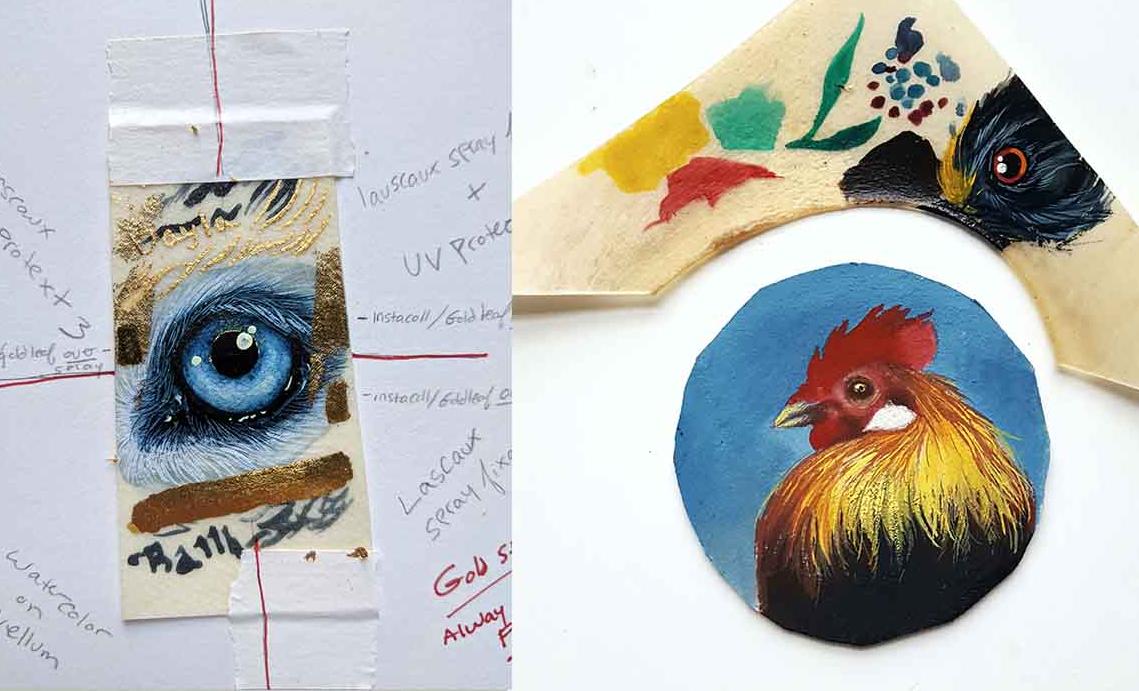
I even learned the art of gilding, a decorative technique for applying a very thin coating of gold to solid surfaces, though I have yet to use it in this particular project.
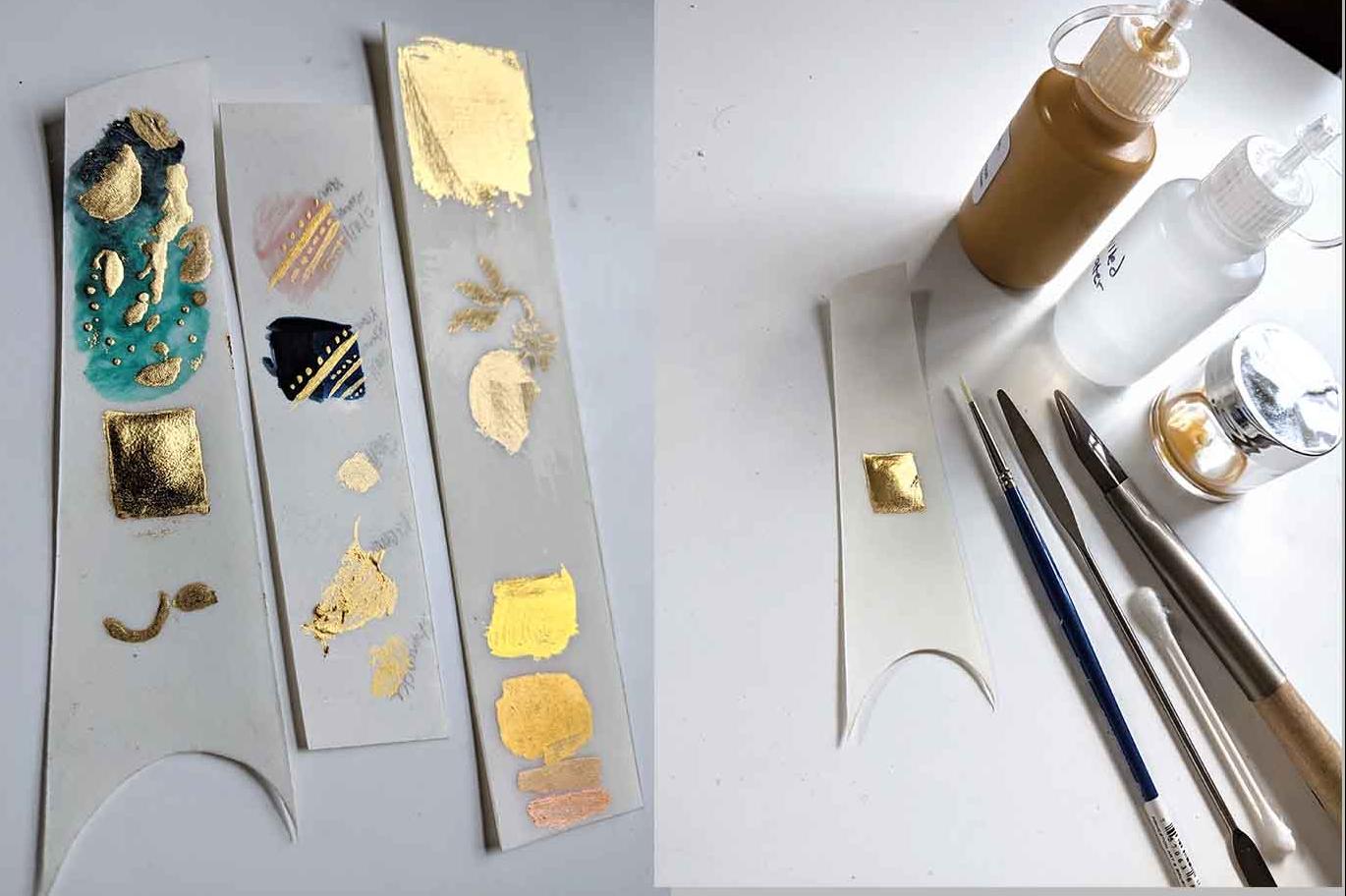
I researched the first few species I planned to represent using the Yale Peabody Museum of Natural History online collections database and pulled imagery and information from its website.
Wild cabbage (Brassica oleracea)
Wild Boar (Sus scrofa)
Rock dove (Columba livia)
Barley (Hordeum vulgare)
MorphoSource is another one of my favorite places to find animal anatomy references. The CT scanned specimens on this site are free to view and completely accessible. Each specimen can be digitally manipulated and moved to exactly the angle an artist is seeking. I find looking at animal anatomy useful, even when I am painting the skin and fur around the skeleton.
European polecat (Mustela putorius)
Attribution-CC0. https://www.morphosource.org/Detail/MediaDetail/Show/media_id/29881
This reference is for the Stoat (Mustela erminea), NOT the European polecat (Mustela putorius), which I am representing. But both animals are in the same genus and it is important to know how to work with imperfect references, using what is useful and discarding what is not.
Last Common Ancestor
Bayla Arietta
Watercolor and gouache on vellum
Mounted on vintage library catalog cards
Various sizes
2019 - 2020
©Bayla Arietta
These six pieces—Columba livia (rock dove), Mus musculus (house mouse), Brassica oleracea (wild cabbage), Hordeum spontaneum (wild barley), Mustela putorius (European polecat), and Sus scrofa (wild boar)— have been completed. Moving forward, this project will include portraits of a wide variety of flora and fauna, such as the last common ancestor of the chicken, cattle, alpaca, carp, fruit trees, corn, dog, goat, and even the self-domestication of humans (adaption to a domestic lifestyle). With an endless list of possibilities showing the breadth and scope of the consequences of human activities and meddling in the natural world, I envision this project growing and exploring human–nature relationships.
The practice of domestication is a global, ongoing, and cross-generational collaborative human activity that extends beyond place and time. We all benefit from domesticated plants and animals, whether for food or companionship, but how have we shaped our environment with this form of artificial selection, and what would the world look like if we suddenly ceased selective plant and animal breeding? Last Common Ancestor is a collaboration between art and science, exploring these questions and illustrating the origin of domesticated species in a tender and nostalgic way.
To see more of Bayla's illustration work, please visit www.BaylaArt.com Instagram: @BaylaArt Twitter: @BaylaArt
